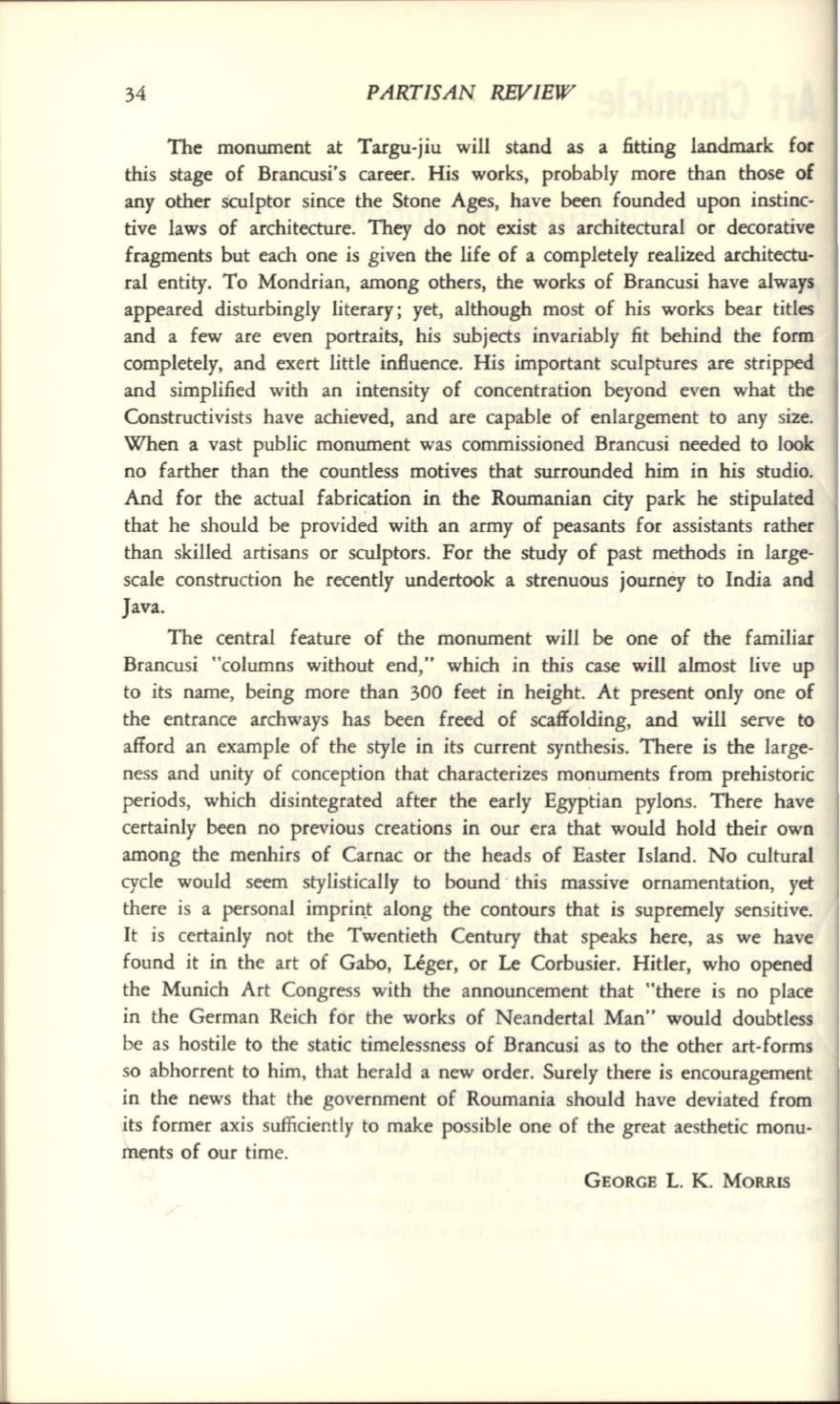
34
PARTISAN REVIEW
The monument at Targu-jiu will stand as a fitting landmark for
this stage of Brancusi's career. His works, probably more than those of
any other sculptor since the Stone Ages, have been founded upon instinc–
tive laws of architecture. They do not exist as architectural or decorative
fragments but each one is given the life of a completely realized architectu–
ral entity. To Mondrian, among others, the works of Brancusi have always
appeared disturbingly literary; yet, although most of his works bear titles
and a few are even portraits, his subjects invariably fit behind the form
completely, and exert little influence. His important sculptures are stripped
and simplified with an intensity of concentration beyond even what the
Constructivists have achieved, and are capable of enlargement to any size.
When a vast public monument was commissioned Brancusi needed to look
no farther than the countless motives that surrounded him in his studio.
And for the actual fabrication in the Roumanian city park he stipulated
that he should be provided with an army of peasants for assistants rather
than skilled artisans or sculptors. For the study of past methods in large–
scale construction he recently undertook a strenuous journey to India and
Java.
The central feature of the monument will be one of the familiar
Brancusi "columns without end," which in this case will almost live up
to
its
name, being more than 300 feet in height. At present only one of
the entrance archways has been freed of scaffolding, and will serve to
afford an example of the style in its current synthesis. There is the large–
ness and unity of conception that characterizes monuments from prehistoric
periods, which disintegrated after the early Egyptian pylons. There have
certainly been no previous creations in our era that would hold their own
among the menhirs of Carnac or the heads of Easter Island. No cultural
cycle would seem stylistically to bound ' this massive ornamentation, yet
there
is
a personal imprio.t along the contours that
is
supremely sensitive.
It
is
certainly not the Twentieth Century that speaks here, as we have
found
it
in the art of Gabo, Leger, or Le Corbusier. Hitler, who opened
the Munich Art Congress with the announcement that "there
is
no place
in the German Reich for the works of Neandertal Man" would doubtless
be as hostile to the static timelessness of Brancusi as to the other art-forms
so abhorrent to him, that herald a new order. Surely there
is
encouragement
in the news that the government of Roumania should have deviated from
its former axis sufficiently to make possible one of the great aesthetic monu–
ments of our
time.
G EORGE
1.
K.
MORRIS


